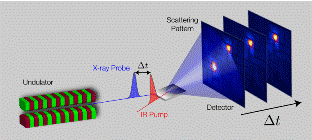Department of Physics and Astronomy: Publications and Other Research

Matthias Fuchs Publications
Document Type
Article
Date of this Version
2007
Citation
Published in APPLIED PHYSICS B 86 (2007), pp. 431-435; doi: 10.1007/s00340-006-2565-7 Published online January 27, 2007.
Abstract
A recent breakthrough in laser-plasma accelerators, based upon ultrashort high-intensity lasers, demonstrated the generation of quasi-monoenergetic GeV-electrons. With future Petawatt lasers ultra-high beam currents of ~ 100 kA in ~ 10 fs can be expected, allowing for drastic reduction in the undulator length of free-electron-lasers (FELs). We present a discussion of the key aspects of a table-top FEL design, including energy loss and chirps induced by space-charge and wakefields. These effects become important for an optimized table-top FEL operation. A first proof-of-principle VUV case is considered as well as a table-top X-ray-FEL which may open a brilliant light source also for new ways in clinical diagnostics.


Comments
Copyright 2007 Springer Verlag. Used by permission.